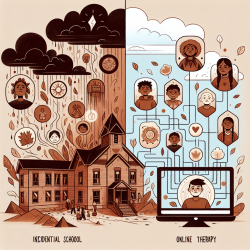Introduction
Childhood diarrhea remains a significant health challenge in low- and middle-income countries, often leading to severe health outcomes due to harmful management practices. A systematic review titled Harmful practices in the management of childhood diarrhea in low- and middle-income countries: a systematic review highlights the prevalence of such practices and the need for practitioners to align with WHO guidelines to improve child health outcomes.
Understanding Harmful Practices
The review identifies four key harmful practices: restriction of fluids, breast milk, and/or food intake during diarrhea episodes, and incorrect use of modern medicines. These practices contradict WHO guidelines, which recommend continued feeding, increased fluids, and appropriate use of medications.
Research Findings
The systematic review analyzed 114 studies and found significant variations in the prevalence of harmful practices across different regions and populations. Many studies relied on sub-national samples, and the definitions of harmful practices varied, making it challenging to draw consistent conclusions.
- Fluid Curtailment: Fluid restriction was reported in various studies, with caregivers often believing that more fluids would worsen the condition.
- Breastfeeding Reduction: Some caregivers ceased or reduced breastfeeding due to misconceptions about its impact on diarrhea.
- Food Restriction: Many caregivers restricted food intake, believing it would exacerbate diarrhea.
- Inappropriate Medication Use: Misuse of antibiotics and antidiarrheal drugs was prevalent, often due to misconceptions about their efficacy.
Encouraging Best Practices
Practitioners can play a crucial role in transforming these harmful practices by educating caregivers and aligning treatment approaches with WHO guidelines. Here are some strategies:
- Education and Awareness: Conduct educational sessions for caregivers to dispel myths about diarrhea management and promote WHO-recommended practices.
- Community Engagement: Involve community leaders and healthcare workers to reinforce positive practices and provide consistent messages.
- Standardized Guidelines: Implement standardized guidelines for diarrhea management across healthcare facilities to ensure consistency in treatment approaches.
- Further Research: Encourage further research to understand the cultural beliefs influencing harmful practices and develop targeted interventions.
Conclusion
By understanding and addressing the harmful practices identified in the systematic review, practitioners can significantly improve the management of childhood diarrhea in low- and middle-income countries. Aligning with WHO guidelines and promoting education and awareness will enhance child health outcomes and reduce diarrhea-related mortality.
To read the original research paper, please follow this link: Harmful practices in the management of childhood diarrhea in low- and middle-income countries: a systematic review.










